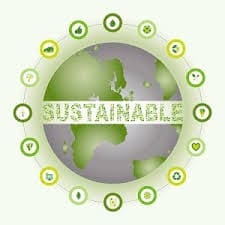The Issues: Chemicals
Around 8,000 synthetic chemicals are used in the fashion, textile and footwear industry to turn raw materials into final products. Not only do these chemicals pose health hazards to the people who work with them, particularly without using protective equipment – but many of the chemicals also end up in freshwater systems. Brands and manufacturers seeking to ‘do fashion better’ should therefore be concerned about the amount of chemical usage in production, and where possible transition to sustainable fibre sources, and alternative natural dyes and processing methods.
- An estimated 20 per cent of water pollution comes from textile dyeing and treatment, according to the World Bank.
- Cotton production uses 4 per cent of all world pesticides and 10 per cent of insecticides.
- In 2012, testing of more than 100 garments from 20 major fashion labels sold in 29 countries showed that all brands had hazardous chemicals in some of their items.
Where are chemicals used
Conventional cotton production makes heavy use of nitrogen and phosphorous-based fertilisers, as well as pesticides and insecticides to protect crops from insects such as boll weevil and mealybugs. While use of pesticides, insecticides and herbicides has reduced in recent decades, the scale of the reduction appears patchy.
A long list of chemicals is used in the dyeing, processing and finishing of products, many of them highly toxic, and to be avoided. Prior to dyeing, fabrics are scoured using chlorinated solvents such as trichloroethane (TCE) as well as nonylthenol ethoxylates (NPEs) – both considered potentially harmful to human health – and their use is currently restricted or banned in the EU.
8,000 synthetic chemicals are used in the fashion, textile and footwear industry
Around 60 to 80 per cent of all fabric colorants are AZO dyes, which release chemicals when fabric comes into contact with the skin. Chlorobenzenes, toxic by inhalation or on skin contact, are widely used in the dyeing of polyester. Phthalates are used to dye and soften leather, rubber and PVC in footwear and accessory manufacture. Perfluorinated chemicals, formaldehydes and chlorinated paraffins are used in finishing processes in order to deliver waterproofing effects or flame retardance, or to create easy-care fabrics, for example.
It is critical to ensure the safe treatment of effluents to prevent synthetic chemicals from entering the freshwater system. In Tirupur, Tamil Nadu, the textile dyeing industry was put on notice by the Indian government to clean up its act, and established 18 common effluent treatment plants (CETPs). However, several years later the local river remains heavily polluted, as many factory owners have resisted making use of them due to cost. Responsible purchasing practices, which deliver enough value to afford such facilities, are intrinsically linked to efforts to reduce chemical contamination.
Sustainable and organic cotton farming methods play an important role in reducing chemical use at farm level. In processing and manufacturing there is also a growing range of alternatives to toxic chemicals.
Take Action
Businesses can reduce their chemical impact by:
- seeking out materials, dyes and fabrics that meet third party certification standards such as the Global Organic Textile Standard (GOTS), Oeko-Tex® Standard 100, bluesign® or the EU Ecolabel;
- collaborating with other companies in programmes such as Zero Discharge of Hazardous Chemicals (ZDHC), which have created a roadmap for the textile and footwear sector;
- working with suppliers to progressively replace use of toxic chemicals with safer alternatives, and partnering with companies providing alternatives;
- checking that manufacturing plants, especially dyeing plants, have adequate effluent treatment systems;
- considering use of natural rather than synthetic dyes at the product design stage;
- factoring sustainably sourced fabrics and alternatives to chemicals into pricing models and purchasing practices.

